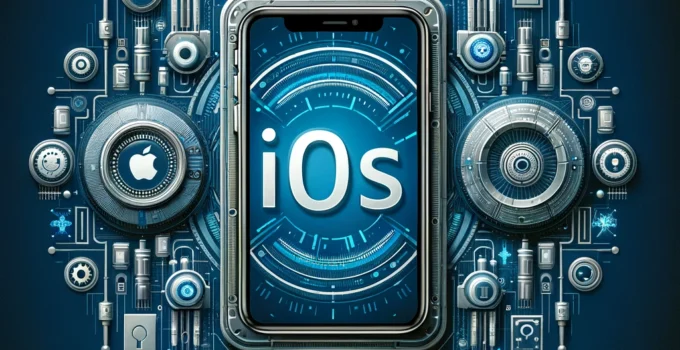How to Secure Your iOS Device Against Cyber Threats? In an age where digital security is more critical than ever, protecting your iOS device from cyber threats has become paramount. iPhones and iPads, renowned for their robust security features, are not impervious to risks. This comprehensive guide provides practical steps to fortify your iOS device against malware, data breaches, and other cyber threats, ensuring your digital safety.
iOS Shortcuts: Automating Your Daily Tasks Efficiently
Understand the Threat Landscape
Before diving into the protective measures, it’s essential to grasp the types of cyber threats facing iOS users. From phishing scams and malware to unsecured Wi-Fi networks and app vulnerabilities, the threat landscape is ever-evolving. Awareness is the first step toward protection.
Keep Your iOS Updated
Apple frequently releases iOS updates that include security patches and enhancements. One of the most straightforward yet effective ways to protect your device is by keeping your iOS updated. Navigate to Settings > General > Software Update to install any available updates promptly.
Use Strong, Unique Passwords
The foundation of digital security is strong, unique passwords. Utilize Apple’s built-in password manager or a reputable third-party app to generate and store complex passwords. Avoid using easily guessable information like birthdays or simple sequences.
Enable Two-Factor Authentication (2FA)
Two-factor authentication adds an extra layer of security by requiring a second form of verification beyond your password. Enable 2FA for your Apple ID by going to Settings > [your name] > Password & Security > Two-Factor Authentication.
Be Wary of Phishing Attempts
Phishing scams, where attackers masquerade as trustworthy entities to steal sensitive information, are increasingly sophisticated. Always verify the authenticity of requests for personal information and never click on suspicious links or attachments.
Download Apps from Trusted Sources
The App Store is curated by Apple to ensure the apps are safe and free from malware. Always download apps from the App Store and avoid third-party sources. Regularly review the permissions apps request to ensure they’re necessary for the app’s function.
Use a VPN on Public Wi-Fi
Public Wi-Fi networks are hotspots for cybercriminals. When using public Wi-Fi, employ a reputable Virtual Private Network (VPN) to encrypt your internet connection, protecting your data from potential interceptors.
Regularly Back Up Your Device
Backing up your device provides a safety net in the event of data loss due to cyber threats. Use iCloud or iTunes to create regular backups, ensuring you can restore your information if needed.
Disable Lock Screen Notifications
Sensitive information can be displayed in notifications on your lock screen, making it potentially accessible to anyone with physical access to your device. Customize your notification settings in Settings > Notifications to hide sensitive content on the lock screen.
Conclusion: Proactive Protection Is Key
Securing your iOS device against cyber threats requires a proactive approach. By updating your system regularly, using strong passwords, enabling two-factor authentication, and staying vigilant against phishing, you can significantly reduce your risk of cyberattacks. Remember, in the digital realm, your security is in your hands.
Call to Action
Stay informed on the latest cybersecurity trends and updates from Apple. By embracing these security measures, you’re not just protecting your device; you’re safeguarding your digital life.



